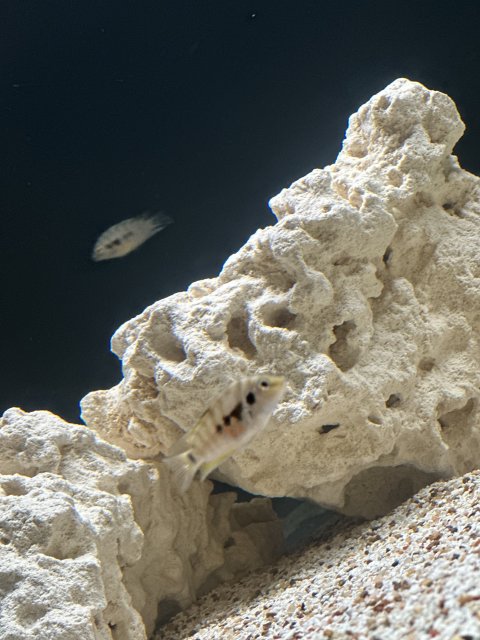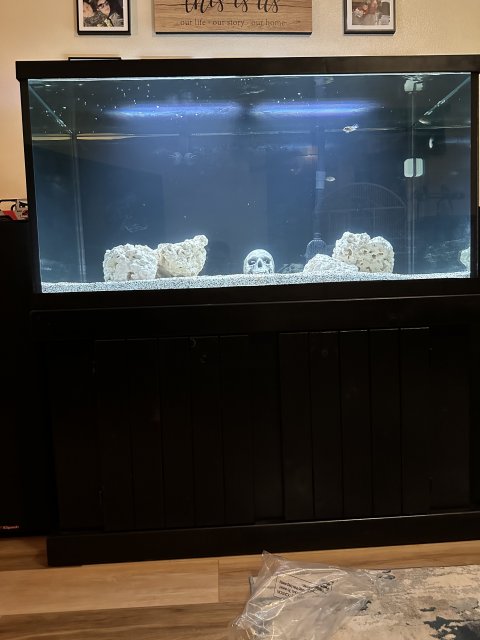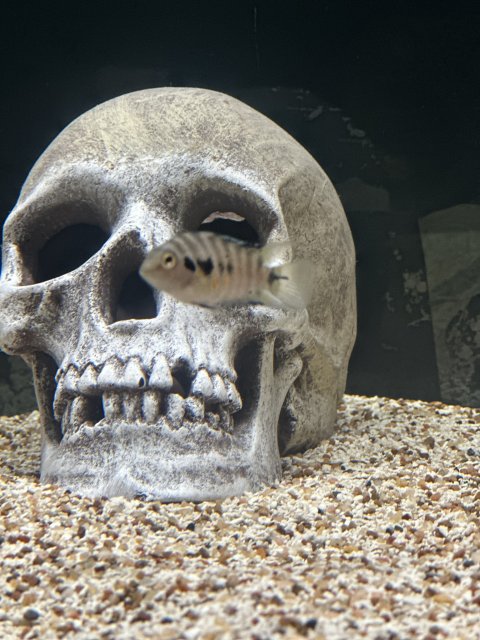120g convict and red terror pair!
- Thread starter oscarmeyer321
- Start date
-
- Tags
- #120g #convict #red terror
You are using an out of date browser. It may not display this or other websites correctly.
You should upgrade or use an alternative browser.
You should upgrade or use an alternative browser.
Looks like your pH will be high compared to festae natural habitat and if the cons establish dominance they'll destroy juvenile festae
I will divide them off. If I get a pair out of the convicts fine. If not they are gone and the terrors will reign and hopefully I get a single pair.Looks like your pH will be high compared to festae natural habitat and if the cons establish dominance they'll destroy juvenile festae
What signs tell you the ph is high?Looks like your pH will be high compared to festae natural habitat and if the cons establish dominance they'll destroy juvenile festae
He’s probably basing that off the live rock and crushed coral substrate
The Rio Guayas and other rivers in Ecuador (that flow west of the Andes), where festae are found average pH is considered 7.7, with seasonal difference that range from as low as pH 6 soaring onto almost 9 at other times.
Rivers flowing "west" of the Andes are quite different than waters east of the Andes in Amazonia where the norm is low pH, and water is soft.
For Mesoheros, and Andinoacara the elevated pH from Texas honey rock and aragonite should not be a problem,
although the starck white theme may cause cichlids to wash out, and not show true colors.
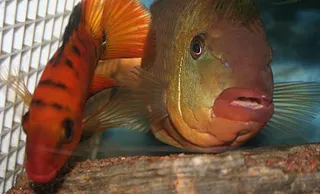
Rivers flowing "west" of the Andes are quite different than waters east of the Andes in Amazonia where the norm is low pH, and water is soft.
For Mesoheros, and Andinoacara the elevated pH from Texas honey rock and aragonite should not be a problem,
although the starck white theme may cause cichlids to wash out, and not show true colors.

‘The white may wash the fish out? This is what was advised to me going with devil/midas. I changed my mind last second. Man dont say that please. Ugh.The Rio Guayas and other rivers in Ecuador (that flow west of the Andes), where festae are found average pH is considered 7.7, with seasonal difference that range from as low as pH 6 soaring onto almost 9 at other times.
Rivers flowing "west" of the Andes are quite different than waters east of the Andes in Amazonia where the norm is low pH, and water is soft.
For Mesoheros, and Andinoacara the elevated pH from Texas honey rock and aragonite should not be a problem,
although the starck white theme may cause cichlids to wash out, and not show true colors.
View attachment 1506417
If this is the case then I will setup another tank after the growout phase.The Rio Guayas and other rivers in Ecuador (that flow west of the Andes), where festae are found average pH is considered 7.7, with seasonal difference that range from as low as pH 6 soaring onto almost 9 at other times.
Rivers flowing "west" of the Andes are quite different than waters east of the Andes in Amazonia where the norm is low pH, and water is soft.
For Mesoheros, and Andinoacara the elevated pH from Texas honey rock and aragonite should not be a problem,
although the starck white theme may cause cichlids to wash out, and not show true colors.
View attachment 1506417
All cichlids are chameleon like, and will try to instinctually blend with the substrate to make themselves less obvious to predators.
So if you put in a white substrate, with white rocks (unless you add dark sunken logs or some other dark decor such as lots of plants), don't expect darker colorful fish to show normal colors.
As an example of a cichlid that will show great colors on light substrate (because it is the norm in their habitat in nature), Herichthys carpintus is a good choice
Most danger to themis not lethal and un-notuced from the side, and fish "want" to be noticed by potential mates.
Their primary predators are aerial.
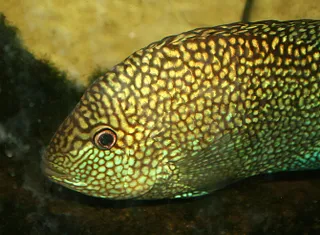
So this broadside color is desired, but from the air, their coloration makes them almost invisible.
There are 3 capintus in the pic below.
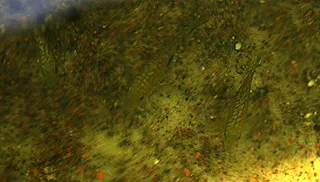
But even in this case, the substrate is "not" un-naturallywhite.
Another problem with stark white substrate is, your cichlids will want to constantly hide.
Many fish have the ability to color shift in an instant, even the mollies in the video below
Eden2
But also notice the JDs, that lose color over light colored substrate toward the end of the video, compared to the ones in the beginning, or living at depths.
If you want your cichlids to show great color like the way they do in nature, providing the color substrate that most matches their natural habitat is the key.
So if you put in a white substrate, with white rocks (unless you add dark sunken logs or some other dark decor such as lots of plants), don't expect darker colorful fish to show normal colors.
As an example of a cichlid that will show great colors on light substrate (because it is the norm in their habitat in nature), Herichthys carpintus is a good choice
Most danger to themis not lethal and un-notuced from the side, and fish "want" to be noticed by potential mates.
Their primary predators are aerial.

So this broadside color is desired, but from the air, their coloration makes them almost invisible.
There are 3 capintus in the pic below.

But even in this case, the substrate is "not" un-naturallywhite.
Another problem with stark white substrate is, your cichlids will want to constantly hide.
Many fish have the ability to color shift in an instant, even the mollies in the video below
Eden2
But also notice the JDs, that lose color over light colored substrate toward the end of the video, compared to the ones in the beginning, or living at depths.
If you want your cichlids to show great color like the way they do in nature, providing the color substrate that most matches their natural habitat is the key.
Substrate isn't everything, a mentioned adding a dark background or some driftwood and plants, or branches etc can help. Also your tank looks cool but these aren't african cichlids. Having a bare tank with a few rocks isn't going to make them comfortable. They need branches, plants, driftwood. Natural cover and hidey spots to feel at home and thrive and display natural cichlid behaviors.


